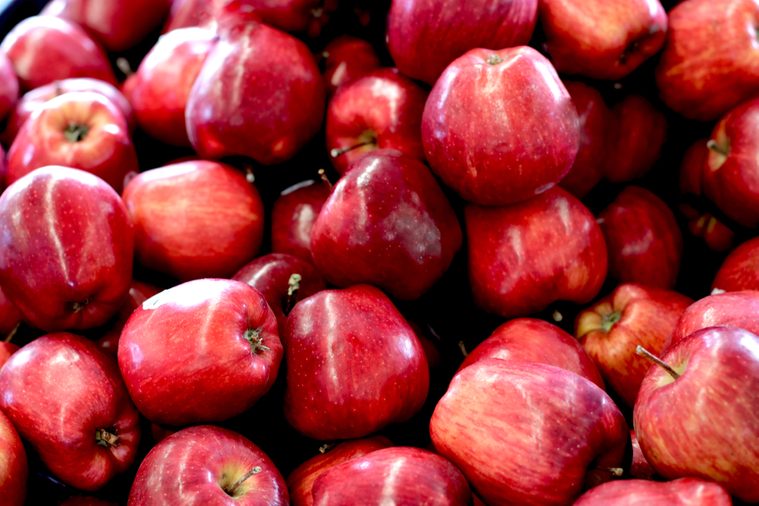
Lead
This is certainly one of the last ingredients you’d think could wind up in your kids’ food. However, traces of lead are found in fruit juices, mixed fruit, apples, pears, baby foods, and vegetables like carrots and sweet potatoes, according to the FDA. “Lead has been found to cause behavioral problems such as hyperactivity, aggression, and inattention as well as lower IQ,” warns Otoniel Santiago, RD, clinical dietitian with the Get Up & Go program at Children’s Health. To lower your child’s consumption of lead, Santiago recommends serving up foods that will block lead absorption, such as turnip greens, collard greens, canned salmon, and dairy products. “These are high in calcium, and calcium and lead compete for the same absorption sites in bones; the more calcium available, the easier the win for calcium,” says Santiago—and the less lead your child will absorb. “Additionally, iron-rich foods like red meats, beans, and lentils, when taken with foods high in vitamin C, can help with the absorption of iron and further block the absorption of lead.” Some examples of foods that are high in vitamin C are tomatoes, oranges, bell peppers, strawberries, and watermelons.
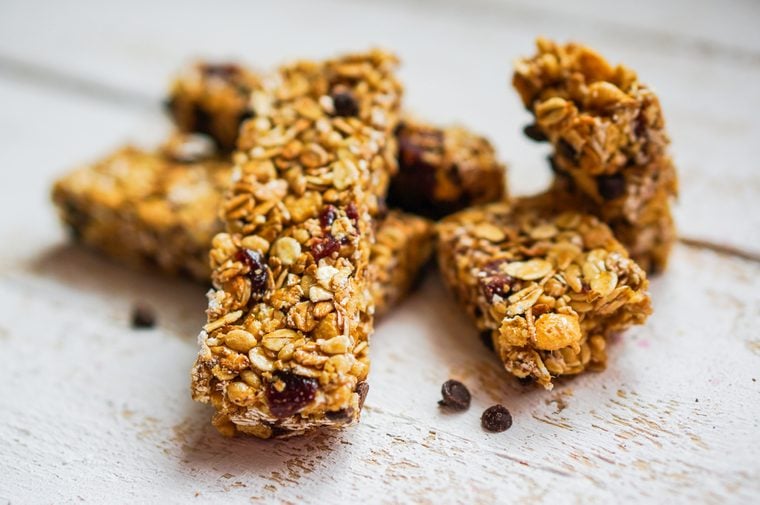
Sugar
Most kids can’t seem to get enough sugary foods. Parents may try to limit their kids’ exposure by eliminating sweets like cookies and ice cream, but that may not be enough, explains Jessica Tosto, MS, RD, clinical coordinator of nutrition and dietetics in the College of Health Professions at Pace University. Sugar is added to many food items that most people would never imagine it could (or should) be in, from ketchup and bread to snack chips and granola bars—even processed meats have sugar added to them. “One prime often overlooked example is yogurt, especially fruit-flavored varieties which contain about 18 grams of sugar,” she says. Instead of serving sugar-sweetened drinks like soda and juice, she says, try choosing plain (not vanilla) yogurt and jazzing it up with ripe banana slices and blueberries, sliced almonds, or walnuts and raisins and ¼ teaspoon of vanilla extract. Here are more sneaky sources of added sugar you don’t realize you’re eating.

Saturated fat
“Solid fats like the kind contained in red and processed meat, fried foods, milk and cheese, butter, pastries, and cakes increase an individual’s risk for heart disease later—kids included,” says Natalie Digate Muth, MD, a pediatrician and fellow of the American Academy of Pediatrics. If your child—like most—can’t seem to get enough cheese pizza or the pre-packaged American cheese and processed meat slices, she recommends substituting healthier options such as lean meats and veggies.
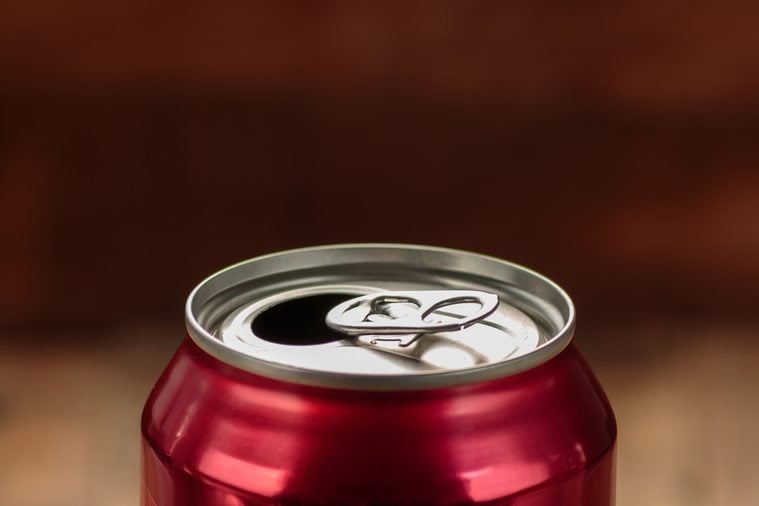
High-fructose corn syrup
This sweetener is added to many foods and beverages. However, Tosto explains that high–fructose corn syrup (HFCS) has a different ratio of fructose to glucose, so it is actually even sweeter than sugar. “It’s also much cheaper, so it is added to numerous food items in the U.S. and is the primary caloric sweetener in sodas,” she says. “While the FDA and the American Medical Association (AMA) maintain that there is no definitive evidence that high-fructose corn syrup is worse for your health than regular sugar, honey, or other traditional sweeteners, many other researchers theorize that there may be a link between rising rates of obesity and the increased consumption of HFCS since the 1970s.” Instead, parents should serve only 100 percent fruit juice to their kiddos (and even that should be given sparingly). Additionally, Tosto recommends adding cut up fruit like strawberries, orange slices, peaches, berries or cucumbers with mint or lime to water or plain seltzer.
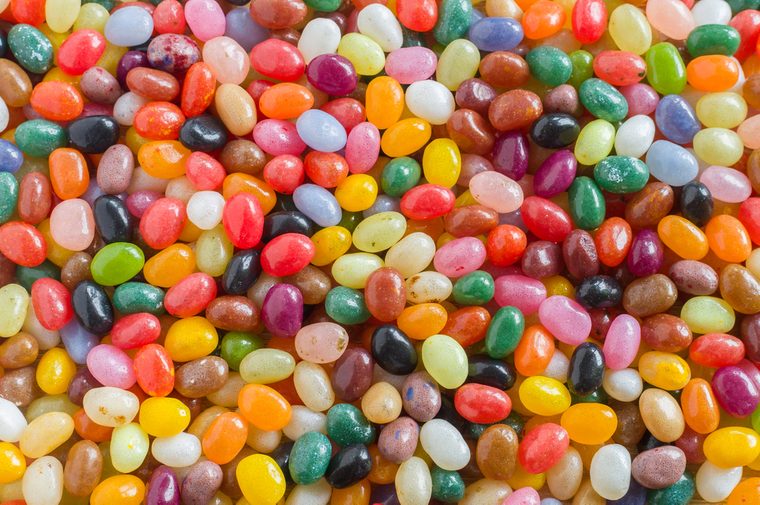
Artificial colors
More foods than you realize contain these chemicals, which are concocted in a lab and made from crude oil and petroleum, explains Mandy Sacher, DO, pediatric nutritionist and author of Wholesome Child. “Although artificial coloring is approved by the FDA for the purpose of enhancing food flavors, they are linked to children’s maladaptive behaviors, allergies, food sensitivities, irritable bowel syndrome, migraines, and thyroid, bladder, and kidney cancers, among other ailments,” Dr. Sacher says. She recommends that parents purchase foods with the fewest artificial chemicals, especially when shopping for their kids. “Look for color-free medications, drinks and foods that use natural coloring from fruits, and natural food products that don’t contain artificial colors like these,” she adds. Look out for these signs you’re eating too many preservatives.
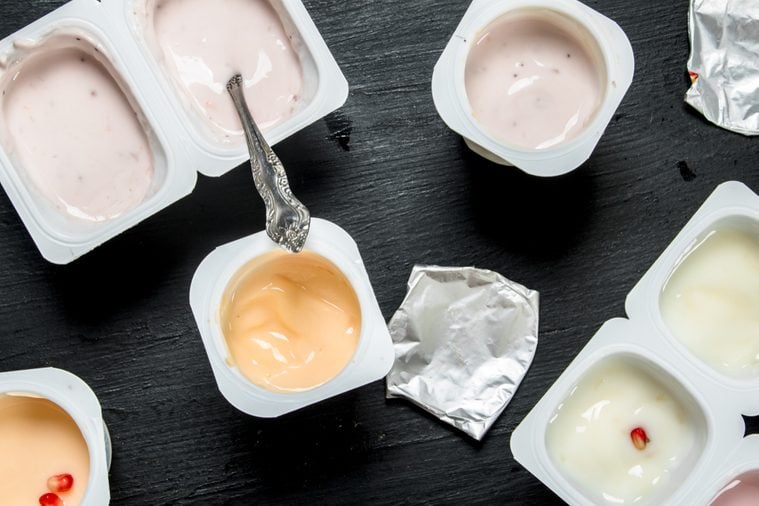
Artificial sweeteners
Despite being used by the health industry to produce low calorie and “sugarless” foods, artificial sweeteners are detrimental to our health, warns Santiago. “They have been found to cause gastrointestinal distress with problems such as bloating, diarrhea and gut dysbiosis, or a lack of beneficial bacteria in your gastrointestinal tract, where 70 percent of our immune system is found,” he says. “Artificial sweeteners disturb the gut microbiota, increasing problems such as leaky gut that affect our immune system.” He recommends that parents turn to nutrient-dense foods instead, for example, replacing flavored yogurt with full-fat Greek yogurt with whole food toppings and diet sodas with sparkling water infused with real fruit.

Sodium
Sodium is sneaky—it’s in so many foods, even ones that don’t taste particularly “salty.” And Americans are getting too much of the stuff in their daily diet, children included. “The American Heart Association recommends ideally 1500 mg (and no more than 2300 mg) of sodium per day, but, on average, children in the U.S. consume more than 3100 mg of sodium per day, with older kids consuming even higher amounts of sodium as their overall calorie intake increases,” says Tosto. “Excess sodium—it’s in popular kids’ lunch options such as pizza, bread, rolls, cold cuts, cured meats, and salty snacks—is associated with elevated blood pressure in children. This risk is even higher for kids who are overweight or obese.” She recommends opting for low-sodium versions of cold cuts or, better yet, using fresh meats like sliced chicken or turkey breast and tuna or salmon leftover from dinner. “Choose unsalted pretzels, roasted unsalted nuts, or cut up veggies with hummus if you are looking for a savory snack and avoid pre-packaged, processed convenience lunches that can contain half a day’s recommended sodium intake,” she adds. Check out these 13 foods with way more salt than you realize.
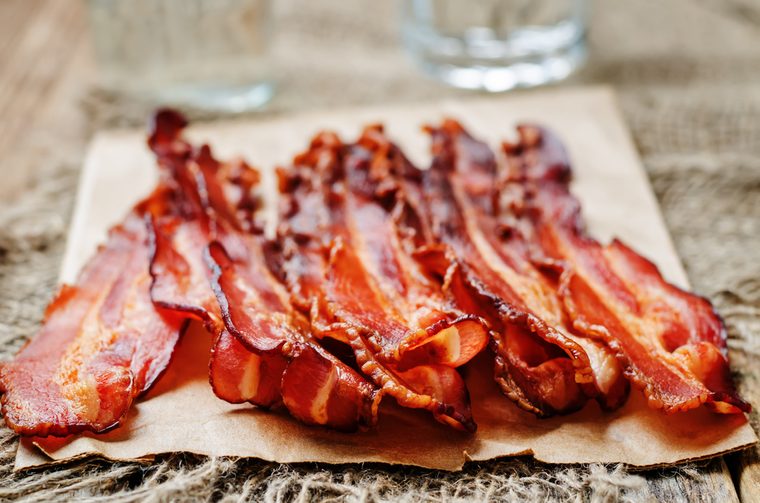
Nitrites
Sodium nitrates and sodium nitrites are preservatives found in processed meats like bacon, lunch meat, and hot dogs. While they help protect the meat from dangerous bacterial growth such as botulism, Santiago explains that in large quantities—and especially when they’re heated and form nitrosamines—they are unhealthy. “They inhibit oxygen transportation, meaning prevent the ability of red blood cells to carry oxygen to other organs in the body. This can cause respiratory problems and other organ damage and can lead to gastrointestinal and brain cancers due to its carcinogenic effects,” he says. “Luckily, many food manufacturers have taken the initiative of preserving foods with sea salt and celery juice instead.” Here are 50 more secrets food manufacturers won’t tell you.

MSG
Monosodium glutamate (MSG) is a popular flavor additive that adds a savory flavor to packaged soups, stocks, sauces, and artificially flavored foods like crackers. While that sounds harmless, this flavor enhancer can often cause digestive issues and even headaches and tiredness, according to Dr. Sacher. The best way to avoid MSG, she says, is to cook using fresh ingredients as much as possible. Her book, Wholesome Child, has a wide range of delicious yet simple marinades and dips—minus the nasty additives—that the whole family will enjoy. Try her homemade ketchup and veggie-packed pasta sauce recipes.
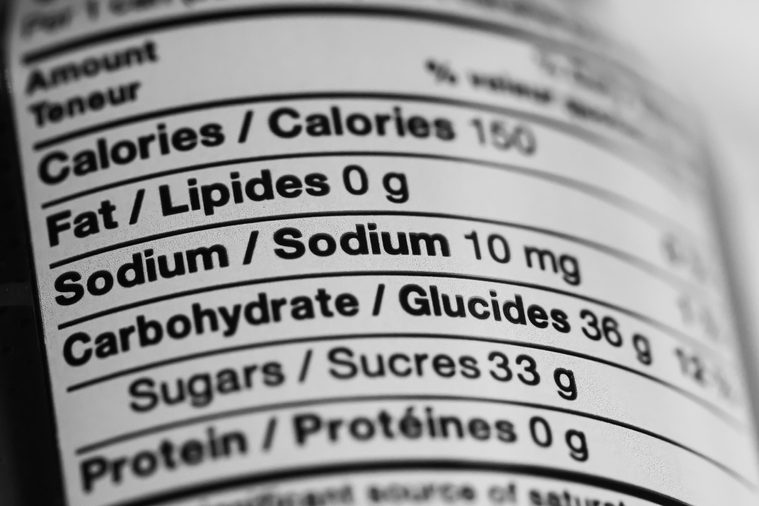
Trans fats
According to Paige Benté, RD, clinical nutritionist and certified specialist in sports dietetics, trans fats are a concern for all age groups due to the way they elevate cholesterol and risk for heart disease—even in children. “Because of the way nutrition labeling laws are written, if a serving contains less than 0.5 grams of trans fats, it is listed as 0 grams, thus enabling the manufacturer to list on the front ‘zero trans fats!'” she says. “Companies get creative with serving sizes—a package or even a ‘piece’ of food might contain multiple servings!” She recommends reading ingredient lists and avoiding anything that says “trans fat,” “partially hydrogenated,” “fully hydrogenated,” or anything “hydrogenated.” Make sure you also look out for these so-called “healthy” snacks that are secretly destroying your body.
Disclosure: This post is brought to you by Reader’s Digest editors, who aim to highlight products and services you might find interesting. If you buy them, we may get a small share of revenue from our partners, such as Amazon Services LLC Associates Program. We frequently receive products free of charge from manufacturers to test. This does not drive our decision as to whether or not a product is featured or recommended. We welcome your feedback. Have something you think we should know about? Email us at [email protected].
